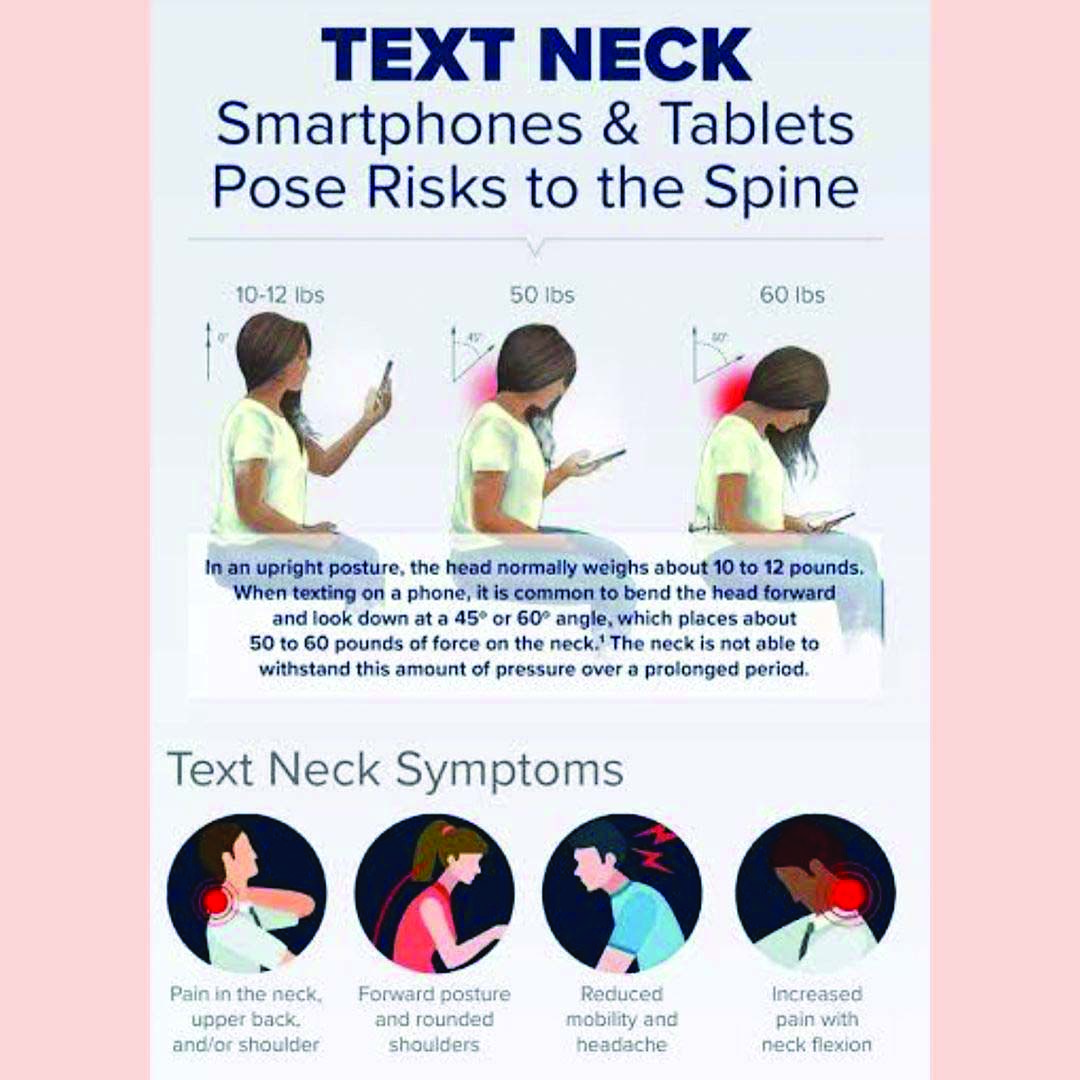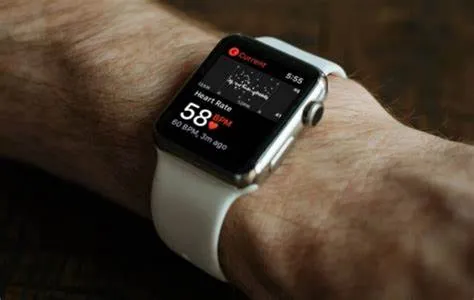The term “text neck” refers to persistent neck pain brought on by repeatedly putting tension on the neck muscles when utilizing electronic gadgets such as computers, phones, and tablets. According to a survey, participants who spent more time on their phones experienced more severe neck pain. Text neck is precipitated by long hours spent in watching phones qhen ur neck is bent forward . Human cervical spine is meant to be in straight position. Its nolatural curve is slightly back ward bent (LORDOTIC CURVE).
Bending neck for ward is like putting extra 8 punds pf weight over ur head and one can easily imagine consequences of putting this kind of weight over head for long hours.
So watching phones for long hours in forward bent positions can cause muscular fatigue and spinal misalignment over time, which can result in pinched nerves, herniated discs, poor posture, and joint inflammation.
Looking down at your phone or other electronic gadgets for extended periods of time can cause text neck. Your neck muscles are built to support the weight of your hefty head. Your neck muscles get strained when you stoop down to use a computer or scroll through your phone. This may cause discomfort, stiffness, or soreness in your neck and result in postural issues.
How to prevent tech neck
1. Stretch your neck (but be gentle)
Try slowly rotating your neck in a clockwise and counterclockwise direction. Afterwards, turn your head to face the opposite shoulder. You can perform these exercises even when seated at a desk. Additionally, they both aid in improving circulation in the region and relaxing the muscles in your neck.
2. Take frequent breaks
This is a crucial guideline, but many people are reluctant to follow it since we are frequently overly dependent on technology. However, taking regular breaks—roughly every 15 to 20 minutes—gives your neck muscles a much-needed rest. To help you remember to take a break (and even sneak in a nap), set a timer or download an app.
3. Examine your work area
You run the risk of straining your neck at work if your chair is coming apart or if your monitor is significantly lower than your eyes. Attempt to align your display with your field of vision by lifting it, and choose a chair that provides enough lumbar support and a headrest. For further support, try reclining a little bit while working and placing your head on the headrest of your chair.
4. Apply heat and cold therapy
Try switching between an ice pack and a heating pad for 15 to 20 minutes at a time to relieve painful muscles. Heat improves circulation to the region, while cold helps your neck muscles become less inflamed.
5. Engage in physical activity
While neck workouts are beneficial, don’t ignore your other body parts. Frequent aerobic activity improves circulation to the neck, bringing nutrients and oxygen in while flushing out inflammatory-related toxins. Exercises that strengthen your core provide additional support for your spine and back, helping you maintain good posture.
6. Limit your time spent on screens
You might have to spend a lot of time in front of a screen at work. If this describes you, make an effort to spend your free time on activities that don’t involve staring at a screen. Take advantage of that time to do something enjoyable and beneficial to your physical and emotional well-being, such as taking a nap, going for a stroll, or spending time with friends in person. Your neck will thank you.
Effects of Text Neck
Tech neck can cause your chest muscles to shorten and your neck muscles to extend, hunching your shoulders and increasing strain on your neck. Pain, tightness, and stiffness in the shoulders and neck are caused by this misalignment. Additionally, nerves that cause lower back pain, neck discomfort, and tingling or numbness in the hands can be pinched by pressure on the spine.
Furthermore, the rotator cuff tendons—the muscles and tendons that surround your shoulder joint—can be pinched and rubbed by forward-slumping shoulders. Rotator cuff tendonitis, a condition marked by inflammation and shoulder discomfort, may eventually result from this irritation.
Tech neck can lead to other problems beyond just your shoulders and neck. Herniated discs (slipped or bulging discs), headaches, and lower back discomfort can all be caused by excess spinal pressure in the neck. Temporomandibular joint (TMJ) discomfort can also be brought on by strained jaw joints and muscles as a result of altered neck muscles and bad posture.
Finally, cervical kyphosis, or the loss of your neck’s natural C-shaped curve, may result from tech neck. With cervical kyphosis, the C-shape opens toward the front of your body as the curvature straightens or even reverses.
The author is the Associate Director & HOD – Neurosurgery, Asian Hospital, Faridabad.























